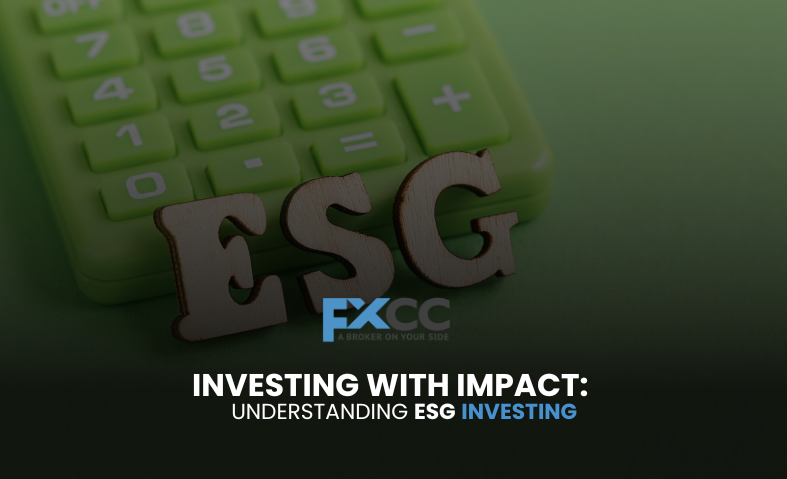In today’s dynamic financial landscape, the conversation around investing has expanded far beyond just financial returns. A new paradigm, known as ESG investing, has taken center stage, transforming how individuals and institutions approach their portfolios. ESG stands for Environmental, Social, and Governance – three core pillars that evaluate a company’s sustainability and ethical impact. For the modern investor, understanding ESG is no longer optional; it’s essential for building a resilient and responsible portfolio.
Deciphering ESG Investing: What Does It Mean?
Essentially, ESG investing revolves around bringing non-financial criteria into the framework of investment choices. It operates on the premise that businesses demonstrating excellence in environmental stewardship, social responsibility, and sound governance are not only ethically superior but also likely to exhibit greater durability and profitability over the long haul.
- The Environmental: (E) component rigorously examines how a business interface with the natural ecosystem. It encompasses elements such as greenhouse gas emissions, energy efficiency, waste handling, water consumption, pollution control, and efforts to adopt renewable energy sources. Companies actively working to lessen their ecological footprint often encounter fewer regulatory hurdles and resonate strongly with environmentally conscious consumers.
- Social (S): The social dimension focuses on an entity’s treatment of its workforce and the communities where it operates. This covers areas like labor practices, fostering diversity and inclusion, human rights, employee relations, health and safety standards, and community involvement. A robust social performance often signals a stable workforce and a positive public perception, thereby mitigating risks associated with public backlash or industrial actions.
- Governance (G): The governance component pertains to an organization’s top-level oversight, internal control mechanisms, auditing procedures, and the rights afforded to its shareholders. It examines factors like executive remuneration, the composition and diversity of its board, operational transparency, adherence to ethical business conduct, and anti-corruption measures. Effective governance practices create a framework for operating a company justly and with integrity, thereby significantly reducing the likelihood of controversies or poor management.

By weighing these non-monetary aspects alongside conventional financial indicators, investors aim to pinpoint enterprises that are not just financially robust but also conscientious corporate members of society.
The Surge in ESG Adoption: What’s Driving It?
The growing prominence of ESG investing isn’t a fleeting trend; it represents a fundamental shift propelled by several powerful factors:
- Heightened Awareness: There’s an expanding global consciousness about pressing issues like climate change, social disparities, and corporate integrity. Many investors, particularly those from younger generations, are keen for their financial allocations to echo their core principles.
- Performance Potential: While some initially viewed ESG as potentially compromising financial returns, increasing evidence indicates that strong ESG performance can correlate with better long-term financial outcomes, reduced risk exposure, and enhanced resilience.
- Regulatory Imperatives: Governments and regulatory bodies worldwide are increasingly introducing legislation concerning climate reporting and sustainable finance. This incentivizes companies to enhance their ESG practices, leading to more accessible and standardized ESG data.
- Risk Alleviation: ESG factors can uncover potential dangers that traditional financial assessments might overlook. For example, a company with subpar environmental practices could face substantial fines or public disapproval, impacting its profitability. Similarly, deficient governance can lead to corruption and a decline in investor confidence.
- Investor Demand: Asset managers and financial institutions are responding to client preferences, leading to a greater array of sustainable investment products.
Navigating the Landscape of ESG Investing
To align with ESG principles, investors have access to a range of strategic approaches:
- Exclusionary Screening: This method involves deliberately omitting certain industries or companies from a portfolio based on specific ESG criteria. Typical areas for exclusion encompass entities involved with fossil fuels, tobacco production, firearms manufacturing, or those engaged in contentious practices.
- Positive Screening (Best-in-Class): This approach focuses on identifying and investing in companies that demonstrate exemplary ESG performance within their respective sectors.
- Impact Investing: This strategy extends beyond conventional returns, seeking to generate both financial gains and a quantifiable, beneficial social or environmental outcome, like investing in renewable energy projects.
- ESG Integration: As the most prevalent method, this involves systematically incorporating ESG factors into the standard financial analysis of all investments to identify risks and opportunities.
- Shareholder Advocacy: Investors can utilize their ownership position to influence corporate behavior by engaging directly with company management on ESG issues and voting on proposals.
Obstacles and Key Considerations
While ESG investing presents compelling advantages, it does come with its share of complexities and hurdles:
- Data Integrity and Consistency: The quality of ESG data can sometimes be inconsistent, making cross-company comparisons challenging. Furthermore, various rating entities employ distinct evaluation methodologies, which can result in differing scores for the same corporate entity.
- “Greenwashing”: This term describes instances where companies present a misleading portrayal of their environmental or social efforts, making them appear more sustainable than their genuine actions warrant. Investors must conduct thorough due diligence to avoid being swayed by superficial claims.
- Performance Debate: Although increasing evidence points towards a positive correlation, some still debate whether ESG investing consistently outperforms traditional investing models. It’s vital to remember that ESG is often a long-term strategy.
- Subjectivity: Defining what constitutes “good” ESG performance can be subjective, requiring careful alignment between investor values and fund criteria.

The Bottom Line
ESG investing marks a significant evolution in the financial sector, mirroring a global movement towards a more sustainable and conscientious economic future. It empowers investors to harmonize their financial aspirations with their personal ethics, contributing to positive societal transformation while potentially boosting long-term returns and reducing risks. As the world confronts intricate environmental and social dilemmas, incorporating ESG factors into investment decisions is more than just a passing trend; it’s evolving into a core component of prudent, forward-looking portfolio management. For investors worldwide, embracing ESG offers a powerful avenue to wield their capital for meaningful impact.


